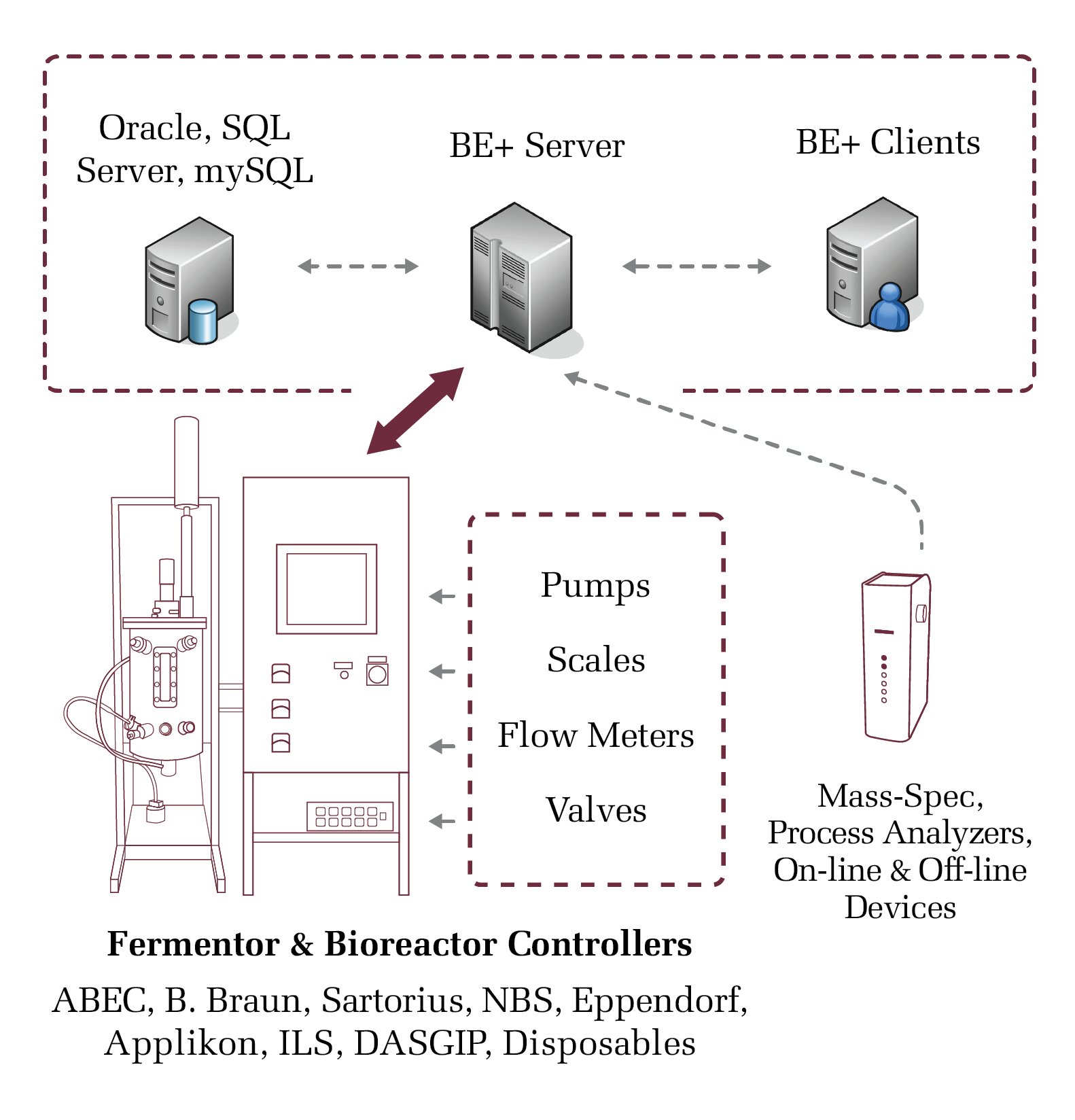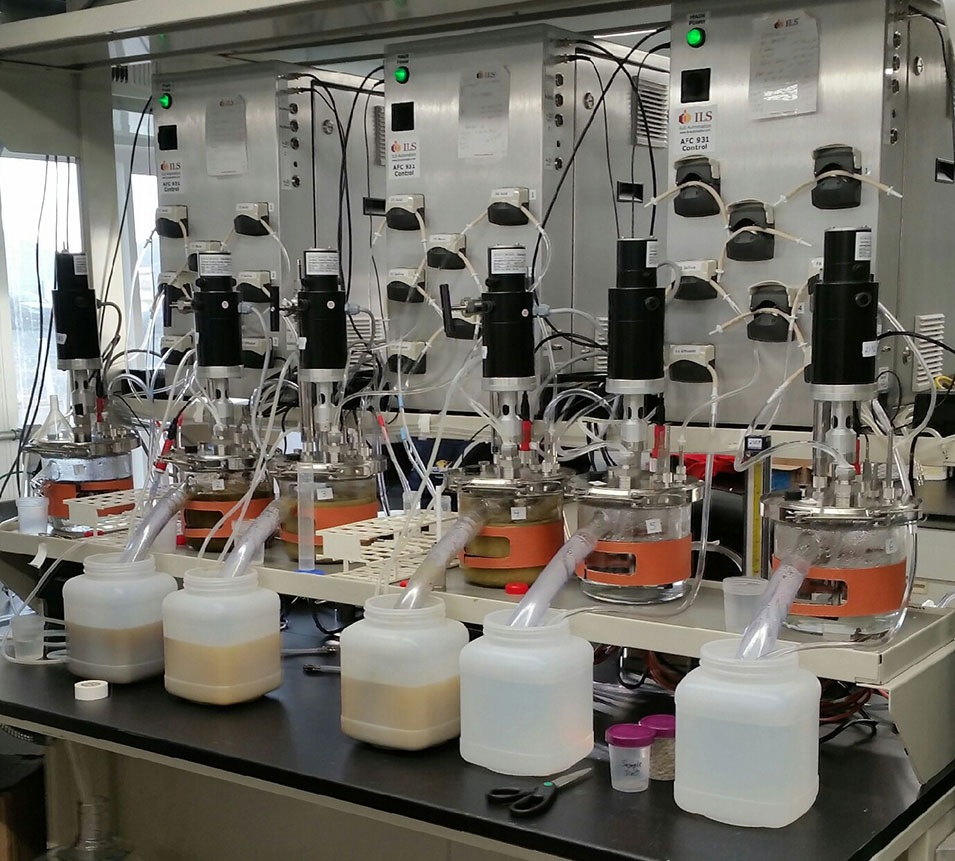Custom Fermentation Control System
ILS creates a custom “Moo Box” controller to simulate a cow’s stomach for development of new feeding strategies
Enzymes Help Cows Digest Feed Corn
Cows, left to being cows, graze on grass and other forage. Grasslands are not as readily available as they used to be. Cost and demand have contributed to more diverse diets and an increased reliance on including grains in the normal diets for many cattle. The industry has invested heavily in research and development to make the most of these feeds while minimizing the carbon footprint of the industry and still meeting the consumer’s demand for beef.
There are a couple of goals of this research specifically aimed at the cow. First, how can the feed deliver the most nutrition to the cows to maximize the value of the added grains. Second, how can the production of methane, a greenhouse gas, be minimized. Methane is a natural byproduct of the digestion of the starch and cellulose found in grains, grasses, and other feed stocks.

Moo Boxes Control Cow Stomach Fermentation Simulations
The problems around bovine health raises the question, “how do we efficiently experiment on the digestive process of cows?” We’ve probably all seen or heard about cows with a surgically-inserted the port into the cow’s first stomach, called the rumen. That chamber, which can hold as much as 50 gallons of fluid, serves as the primary site for microbial fermentation of ingested feed.
These ports are traditionally used to take samples to understand how feed ingredients are digested but are limited in how many ingredients can be tested in a single experiment.
This easy access to the cow’s stomach allows our customer to harvest samples of the rumen contents and then run controlled experiments in custom designed fermenters. These fermenters have an open structure and are fed with the same food ingredients and supplements the cows are given on the farm. ILS was brought into the project back in the beginning to design the custom fermentation control system for these unusual vessels. It seems fitting then that these controllers have been nicknamed “Moo Boxes” by our engineers.
The suite of sensors and controls is bovine specific but not unusual for the fermentation industry. They use Mettler-Toledo ISM probes to provide both pH and ORP, as well as temperature, which is also monitored with through a separate RTD. Set points are monitored, as well as the agitation RPM, pump flows and totalizers. Offgas analysis is provided for CO2, O2, and CH4. Scales are also integrated into the system to monitor and control fluid additions by weight as well as volume. All of these controls were not in the original specifications. Batch Expert+ easily allows for an application to grow and evolve over time, helping the customer grow their understanding and add equipment to further improve experimental results.
With so many available controls designed specifically for their lab, our customer is now able to run hundreds of experiments in the time they used to be able to run about a dozen. This gives them a real advantage in developing new feeding strategies that aide in bovine digestion, providing benefits such as an increase in nutrient absorption or a decrease in methane.
Custom Engineering and How Batch Expert+ Pulls it All Together
This was a unique custom solution designed specifically to meet the customer’s unique lab requirements. To help keep costs down, the controllers run “headless,” meaning they don’t have touch screens. Since everything is controlled through Batch Expert+ (BE+) on local and remote computers, the touch screens would only be redundant. Every function available on the controller and more is available on a computer in the lab, at a researcher’s deck, or from home. No additional software is required from a user with appropriate security access, the entire system can be reached through any web browser.
Fundamental to any research lab is the ability to store, retrieve, and analyze the massive amount of data generated by the lab experiments. The data from all of the experiments is immediately stored in their SQL Server database. The database in Batch Expert+ acts both as a data historian and a source for live trend charts, sensor displays, and analysis. Because the data resides in a SQL database, analysis is not limited to raw data. Calculations based on any data in the database are simple to create and can be displayed and used for closed loop control.
Batch Expert+ functionality is not limited to only ILS custom hardware. The powerful SCADA (Supervisory Control and Data Acquisition) backbone of Ignition, from Inductive Automation, simplifies communications with other devices. As a result, most of ILS’s installations include control and monitoring of equipment from manufacturers such as Sartorius, DASGIP, Eppendorf, New Brunswick, and monitoring devices like mass spectrometers and gas analyzers like BlueSens.
No two ILS customers are identical which means life at ILS Automation is never boring. We have a number of off-the-shelf software and hardware systems that can be integrated and customized, when needed, to bring more value and flexibility to our customers.
Batch Expert+ Architecture
BE+ can be implemented on a single computer or distributed across a network.



